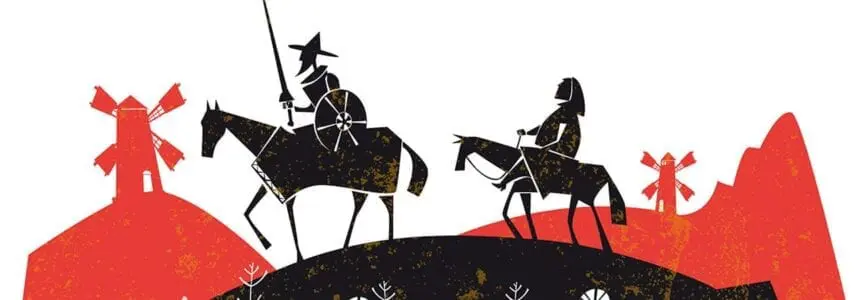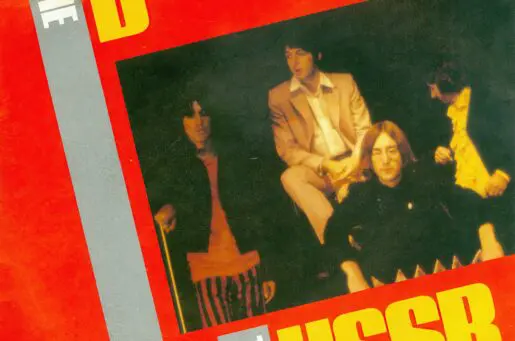Bioethics Forum Essay
Quixote Reimagined: Magical Realism Meets the Opioid Epidemic
What is Don Quixote, Cervantes’ 17th-century Spanish “Ingenious Gentleman of La Mancha,” doing in a 21st-century novel about America? He’s on a quest to wed his Beloved. And what does this obsession have to do with the present-day opioid epidemic? Salman Rushdie’s new novel Quichotte links these unlikely events and much more.
The opioid epidemic is the engine that drives the plot, but Rushdie uses it more as a symbol of the current American zeitgeist than as a devastating medical and public health problem. He focuses on the supply side of opioids—a family-owned pharmaceutical company—not the demand side. Readers may search the novel’s 390 pages in vain for policy solutions, practice guidelines, or philosophical analyses.
Like much of Rushdie’s writing, this is a work of magical realism, in which “a tornado might carry your house to a faraway land where, upon landing, it would squash a witch.” It is also a novel within a novel, ostensibly written by a failed writer of spy thrillers. His pen name is Sam DuChamp, but he is called the Author and one of the novel’s characters. He decides on a whim to write a different kind of book–the one we are reading. Although he and Rushdie have similar Indian backgrounds, the Author is both Rushdie and not Rushdie.
To start, as Rushdie does, with a “Quixotic Note on Pronunciation,” Quichotte can be pronounced many ways, but Rushdie prefers the “elegant French” of key-SHOTT, a nod to the 1910 Jules Massenet opera Don Quichotte. The Indian-American man born as Ismail Smile, soon to become Quichotte, is an avid consumer of trashy TV. He began to think of himself as a “natural citizen (and potential inhabitant) of that imaginary world beyond the screen to which he was so devoted, and which, he believed, provided him and therefore everyone, with the moral, social, and practical guidelines by which all men and women should live.” Even a casual reader can spot trouble ahead.
It is, Ismail believes, the “Age of Anything-Can-Happen.” In this world, an aging salesman like himself might win the love of a beautiful woman, in this case Miss Salma R., a well-known Indian-American TV talk show host, often labeled Oprah 2.0.
Enter the Opioid Epidemic
In a podcast with the New Yorker fiction editor Deborah Treisman, Rushdie says that he decided to use the opioid epidemic as a central focus in this complex story for several reasons. He likes to follow what is happening in the Indian-American community and learned of a family’s role in the opioid epidemic. A more personal reason is his younger sister’s death from what was presumed to be an opioid overdose. As a result, family relationships play a large part in the novel–particularly brothers and sisters and fathers and sons.
Dr. R. K. Smile, the proprietor of Smile Pharmaceuticals Inc. (SPI, pronounced as “Spy”), is a leading citizen in Atlanta and a billionaire. He is also Ismail Smile’s cousin and has employed Ismail as a commercial traveler marketing SPI’s products. Dr. Smile’s fortune is based on his premier product, InSmileTM , a fentanyl spray inserted under the tongue that produces a quicker and effective antidote to “breakthrough cancer pain.” Its off-label uses attract many people without breakthrough pain or even cancer or any other disease. (Here real events have been fictionalized: A pharmaceutical company that produced this kind of spray is now in bankruptcy because of financial penalties related to its marketing activities.)
Dr. Smile took his business model from a street urchin in Bombay who distributed a business card that read “Are you an alcoholic? We can help. Call this number for liquor home delivery.” Back home in Georgia, Dr. Smile’s distribution network sent huge quantities of product to small-town doctors and pharmacists. rapidly increasing sales and profits. Incentives to doctors included generous fees from the Smile Pharmaceutical Expanding Information and Knowledge Bureau (SPEIK) to lecture at promotional events. Even though these lectures were always cancelled at the last minute, the speakers were paid. Dr. Smile’s wife Happy urges him to “brand” the Smile name by major philanthropic gifts to arts organizations, “the way that OxyContin family did.” Dr. Smile agrees, bringing both welcome and unwelcome attention to his brand.
Ismail Becomes Quichotte
After Dr. Smile learns of Ismail’s obsession with Miss Salma R., he dismisses his cousin from the sales force with a pension and a suggestion that he might be helpful in discreetly delivering some products to special clients. Ismail is not dismayed by his retirement; he sees it as the motivating factor he needs to embark on his quest. And with his new status he changes his name to Quichotte.
He also gains the son he never had. He breaks seven wishbones while -watching the Perseid meteor shower in Wyoming, and a teenage son he calls Sancho magically appears in his Chevy Cruze. Sancho appears in black-and-white, only gaining color as the road trip goes on. Later he will leave the story in the way he entered it.
Quichotte and Salma R.
Salma R., as might have been surmised, is the special client to whom Dr. Smile wants Quichotte to deliver his product. Abused as a child by a grandfather, she has been addicted to opioids for years. Quichotte then faces the dilemma of whether to use his stockpile of the drug (complete with Narcan for overdoses) to meet and woo her or whether to refuse to give her drugs to prevent her from overdosing. His decency struggles against his desire. He has a talking gun, which urges him to go to her. But when he does, she just throws the money at him, grabs the package, and runs away. His quest seems lost. But not yet. “In the end, the addict always calls the dealer,” the Author remarks. And so she does.
With the world in environmental and social chaos, the stage is set for a new character—Dr. Evel Cent of CentCorp, a scientist-entrepreneur who has created a post-apocalyptic escape route to NEXT (Neighbor Earth Xchange Technology), where life is the way it used to be on Earth. Quichotte and Salma R. want to travel to this supposed haven until they learn that not all the tests have been completed. They then want Dr. Cent to go first. With Quichotte brandishing the talking gun, Evel Cent rushes through the door to NEXT. Sitting in his office, the Author sees with dismay that he has created a world that cannot sustain the lives of the people he has also created. Yet there they stood “on the threshold of an impossible dream: Miss Salma R. and her Quichotte.” End of a world. End of a story.
With the novel’s twists and turns, and multiple satiric targets, it’s hard to arrive at a concise conclusion. Perhaps the familiar warning will do: be careful what you wish for, you may get it.
Carol Levine is a Senior Fellow at the United Hospital Fund. She is a Fellow of The Hastings Center and a former editor of the Hastings Center Report. In 1993 she was awarded a MacArthur Fellowship for her work in AIDS policy and ethics.













